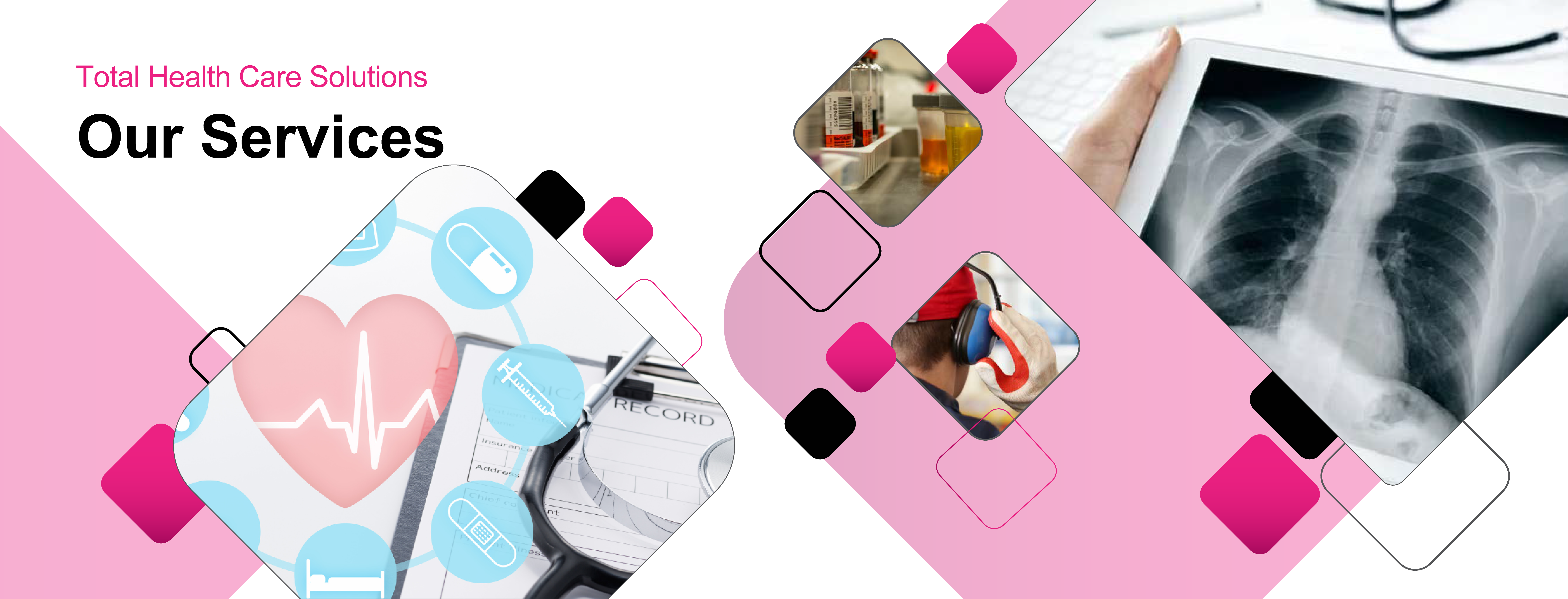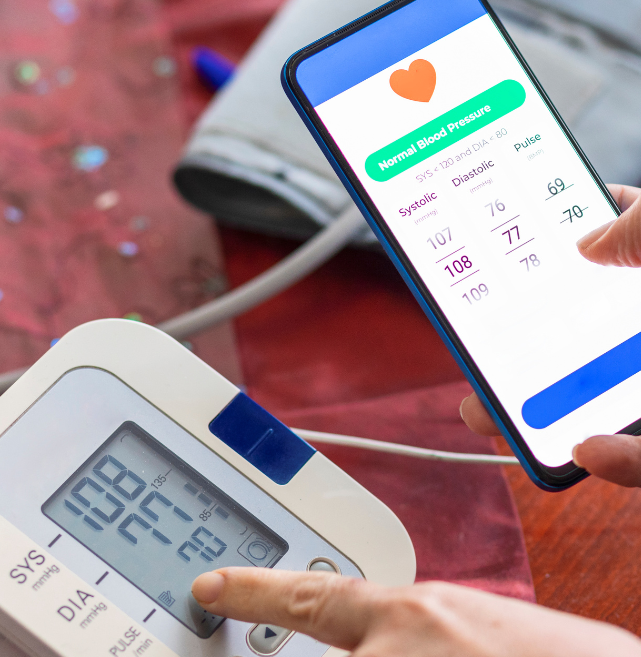
Our Services
Welcome to our comprehensive range of primary healthcare services. At our facility, we prioritize a whole-of-society approach to health, focusing on ensuring the highest level of well-being and equitable distribution of care. Our primary healthcare services encompass a wide spectrum, ranging from health promotion and disease prevention to treatment, rehabilitation, and palliative care. We strongly believe in the power of community participation and the empowerment of individuals in their healthcare journey. With a strong emphasis on preventative medicine, we strive to keep you ahead of potential health concerns by promoting healthy behaviors and conducting regular screenings. Additionally, our occupational healthcare services recognize the impact of the workplace on your well-being, safeguarding your health throughout your career. Through medical surveillance, we carefully analyze health information to identify and address any workplace-related issues, ensuring a safe and healthy environment. Moreover, we offer pharmacy clinic consultations led by nurse practitioners, providing primary healthcare services and convenient access to prescriptions and sick notes.
Primary Health Care

Primary Health Care is a whole-of-society approach to health that aims at ensuring the highest possible level of health and well-being and their equitable distribution by focusing on people’s needs as early as possible along the continuum from health promotion and disease prevention to treatment, rehabilitation, and palliative care, and as close as feasible to people’s everyday environment.” WHO and UNICEF.
Primary Health Care focuses on; Service System development and optimization, empowerment of the individual, and above all community participation in service provision and utilization.
Primary Health Care is the foundation level of healthcare, the first baby steps in a lifelong effort to maintain optimize, and protect life.
Why Is Primary Health Care Important?
Primary Health Care addresses the broader determinants of health and focuses on the comprehensive and interrelated aspects of physical, mental and social health and wellbeing. It provides whole-person care for health needs throughout the lifespan, not just for a set of specific diseases. Primary health care ensures people receive quality comprehensive care – ranging from promotion and prevention to treatment, rehabilitation and palliative care.
Primary Health Care should be the most inclusive, equitable, cost-effective and efficient approach to enhance people’s physical and mental health, as well as social well-being. Evidence of wide-ranging impact of investment in Primary Health Care continues to grow around the world.
Across the world, investments in Primary Health Care improve equity and access, health care performance, accountability of health systems, and health outcomes. While some of these factors are directly related to the health system and access to health services, the evidence is clear that a broad range of factors beyond health services play a critical role in shaping health and well-being. These include social protection, food systems, education, and environmental factors, among others.
Preventative Medicine

Preventative medicine enables us to stay ahead of potential problems by promoting healthy behaviors and conducting regular screenings for diseases and health concerns.
With the development of Dr. Google, Telehealth, and medical monitoring incorporated into our wearable technology, the landscape for healthy living has changed tremendously.
Medical device procedures and management have also changed with time.
Enrolling in our Preventative Health Management program empowers the user to monitor himself, schedule recommended monitoring procedures, and stay on top of age and disease-related developments. The monitoring equipment is recommended on an individual basis. Recommended follow-up intervals are discussed at the beginning of enrolment.
Occupational Health

Quite often we earn our daily living by exposing ourselves to unhealthy and toxic environments. Very seldom are we aware of the impact that our employment environment has on our physical well-being. By addressing the possible influence of the workplace on the employee we ensure that employees retire with as much of their health intact as possible.
Medical Surveillance
Medical surveillance is the analysis of health information to look for problems that may be occurring in the workplace that require targeted prevention. Thus, surveillance serves as a feedback loop to the employer.
Surveillance may be based on a single case or sentinel event, but more typically uses screening results from the group of employees being evaluated to look for abnormal trends in health status. Surveillance can also be conducted on a single employee over time. Reviewing group results helps identify potential problem areas and the effectiveness of existing worksite preventive strategies. The following resources contain medical surveillance information; including specific hazards and surveillance guidelines.
Clinical Assessment
Our Clinical assessment is performed by an Occupational Medical Practitioner and an Occupational Health practitioner. They evaluate the Physical attributes of each employee inclusive of past medical history and trauma. The purpose of an employee medical surveillance program is to determine whether employees are fit for duty by using the criteria, as set out on the main job specification supplied.
Risk Mitigation
Unfortunately, we live in a world where risk mitigation is important and adequate protection against future disability claims and injuries starts with the Pre-Employment examination.
Annual Medical Repetition
Annual medical repetition provides us the assurance that the Status quo of the Initial examination is relatively maintained.
Exit Medicals
By the time that employee and employer part ways – Exit Medicals give both parties the assurance that they are parting in an amicable way on the health frontier. We realize that employees are valuable assets that enable the business to reach its full potential.
Executive Medicals
Executive Medicals is the step above and beyond where additional tests and evaluations are performed to ensure long-term health. Cancer and immune disease screening are not limited to employment but rather aimed at preventing environmental and genetic diseases from influencing the individual. It falls in the same arena as Key personnel insurance.
Audiology
Audiology used to be the most neglected area of medical surveillance and the easiest to obtain disability in. Older people with gunshot-induced hearing loss at present are replaced by youngsters with boom boxes and earphones playing music. Our Audio booth and audiometer are calibrated annually. An effective hearing conservation program combines the Client’s noise reduction program and the annual evaluation of hearing.
Biological Monitoring
Biological monitoring becomes necessary when employees are exposed to various toxic substances like diesel fumes in a mechanical workshop. Diesel was classified as a Group 2A Carcinogen in 1988. Initially, the focus area was bladder cancer only which has subsequently been replaced with studies linking Diesel to lung cancer.
Injuries on Duty
Injuries on Duty can be a severe challenge as the legislative authorities are battling with backlogs and extended sickleave durations. Our one stop management enable the company to present the Compensation commissioner with a completed casefile
Respiratory Screening
Respiratory Screening consists of Spirometry and the Chest x-ray. These tests are supplementing each other as the individual lung capacity is approximately 150% of what the body requires. By the time the Spirometer indicates a reduction in functional lung capacity, 50% of the lung capability could already be gone.
South Africa is among the 16 countries that carry 93% of the world’s Tuberculosis burden. We are also leaders in Multi-Drug Resistant and Extreme Drug-Resistant Tuberculosis. As a province, the Eastern Cape and Limpopo are leading the race while eThekwini is the city with the biggest TB footprint. The mortality rates for MDR-TB are around 40% and 60% for XDR-TB (Extreme Drug-resistant TB). Chest X-rays are the examination method of choice. Chest X-rays are provided to the employee on a disc but also kept in a database for future comparison. Radiologist reports on Chest X-rays are obtained.
Ergonomics
Ergonomics is that slight discomfort that arises after sitting a while behind the computer surfing the web or playing games. We seldom realize this thief in the night is causing repetitive trauma injuries that could be debilitating. The Height Weight examination identifies these challenges and allows us to change our environment beforehand.
Drug Screening
We often link Drug screening to cannabis and heroin pipes but seldom realize that the drug enemy is closer to home. Managing stress with a calming tablet or drinking a cough mixture could also influence employee performance. Chemically the weight reduction medicine and ecstasy perform the same on a drug screening test.
HIV Programs
The initial HIV Programs of the early nineties have been replaced with a more holistic approach with ARVs becoming more accessible and patients driving their own treatment and maintenance bus. Our supportive approach is patient-centric and community-based.
Employee Wellness Programs
Many employees suffer from undiagnosed chronic illnesses, e.g., hypertension (high blood pressure), diabetes, cholesterol, HIV, etc, and even though we educate them on the spot, the treatment non-compliance percentage remains exceptionally high. We identified the need for an employee wellness program providing training and education, which proved invaluable once implemented. With the power of knowledge given to employees, treatment compliance increased significantly. With our first-hand knowledge and extensive years of experience, we are the ideal professionals to deliver your Wellness Programme.
Public Driving Permits
Public Driving Permits really fall under the spotlight when major accidents are on the doorstep with tragic consequences that could have been prevented. Government regulations require an evaluation once every 2 years. Our self-empowerment approach provides the driver with a booklet where regular blood glucose and blood pressure values can be recorded as a means of continuous care. The booklet is available in both a hard and soft copy and can be managed from a smartphone.
Vision Screening
With Vision Screening a division is normally made between general employees and operators and as such the tests differ. Operators are tested for night vision / poor environmental circumstances. The challenge however is that we can seldom guarantee that an employee would never be faced with poor environmental circumstances like storms or even late working conditions. As such we err on the side of caution. The Titmus vision screener is calibrated annually.
Primary Health Care addresses the broader determinants of health and focuses on the comprehensive and interrelated aspects of physical, mental and social health and wellbeing. It provides whole-person care for health needs throughout the lifespan, not just for a set of specific diseases. Primary health care ensures people receive quality comprehensive care – ranging from promotion and prevention to treatment, rehabilitation and palliative care.
Primary Health Care should be the most inclusive, equitable, cost-effective and efficient approach to enhance people’s physical and mental health, as well as social well-being. Evidence of wide-ranging impact of investment in Primary Health Care continues to grow around the world.
Across the world, investments in Primary Health Care improve equity and access, health care performance, accountability of health systems, and health outcomes. While some of these factors are directly related to the health system and access to health services, the evidence is clear that a broad range of factors beyond health services play a critical role in shaping health and well-being. These include social protection, food systems, education, and environmental factors, among others.
Primary Health Care addresses the broader determinants of health and focuses on the comprehensive and interrelated aspects of physical, mental and social health and wellbeing. It provides whole-person care for health needs throughout the lifespan, not just for a set of specific diseases. Primary health care ensures people receive quality comprehensive care – ranging from promotion and prevention to treatment, rehabilitation and palliative care.
Primary Health Care should be the most inclusive, equitable, cost-effective and efficient approach to enhance people’s physical and mental health, as well as social well-being. Evidence of wide-ranging impact of investment in Primary Health Care continues to grow around the world.
Across the world, investments in Primary Health Care improve equity and access, health care performance, accountability of health systems, and health outcomes. While some of these factors are directly related to the health system and access to health services, the evidence is clear that a broad range of factors beyond health services play a critical role in shaping health and well-being. These include social protection, food systems, education, and environmental factors, among others.
South Africa is among the 16 countries that carry 93% of the world’s Tuberculosis burden. We are also leaders in Multi-Drug Resistant and Extreme Drug-Resistant Tuberculosis. As a province, the Eastern Cape and Limpopo are leading the race while eThekwini is the city with the biggest TB footprint. The mortality rates for MDR-TB are around 40% and 60% for XDR-TB (Extreme Drug-resistant TB). Chest X-rays are the examination method of choice. Chest X-rays are provided to the employee on a disc but also kept in a database for future comparison. Radiologist reports on Chest X-rays are obtained.
